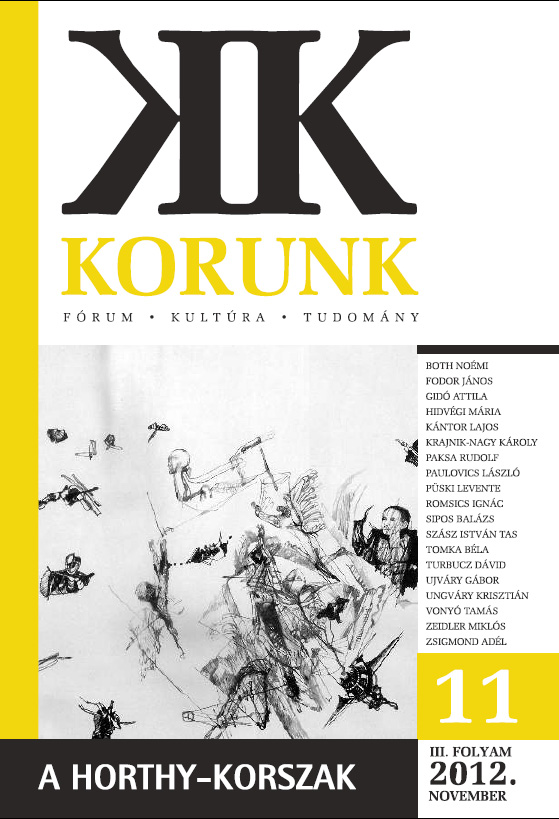A Horthy-rendszer jellege
The Horthy Regime’s Character
Author(s): Ignác RomsicsSubject(s): History, Recent History (1900 till today)
Published by: Korunk Baráti Társaság
Keywords: Miklós Horthy; Horthy regime; fascist; authoritative and traditionally liberal elements
Summary/Abstract: Although some contemporary analyses and historical reflections published immediately after 1945 could have provided a good starting point for a more systematic and archives-based research work concerning the character of the Horthy regime, the intellectual climate of the rigid Communist dictatorship established after 1947-1948 made this task totally impossible. According to the prevailing view on the time period between 1920 and 1945, succinctly stated by Erzsébet Andics, one of the leading figures of the communist historians, “there was an essentially fascist regime in Hungary too for 25 years”. The brochures and the school textbooks of the first 10-15 years did in fact outline this view in detail and illustrated it with concrete material. Due to the more liberal atmosphere of the Kádár regime, real historical research began after the 1956 revolution, and its first results were published in the 1960s. According to the new approaches published in the late 60s and early 70s, the power system of the Horthy regime contained not only fascist but authoritative and traditionally liberal elements as well. By the late ’80s it has been largely accepted that in respect of its political institutions and their functions the Horthy regime should be characterized as a limited parliamentary system with distinctly authoritarian features. Although the evaluations have recently diversified again, professional historians continue to consider the Hungarian regime of the inter-war years as one of authoritarianism with predominant party relations.
Journal: Korunk
- Issue Year: 2012
- Issue No: 11
- Page Range: 3-12
- Page Count: 10
- Language: Hungarian

